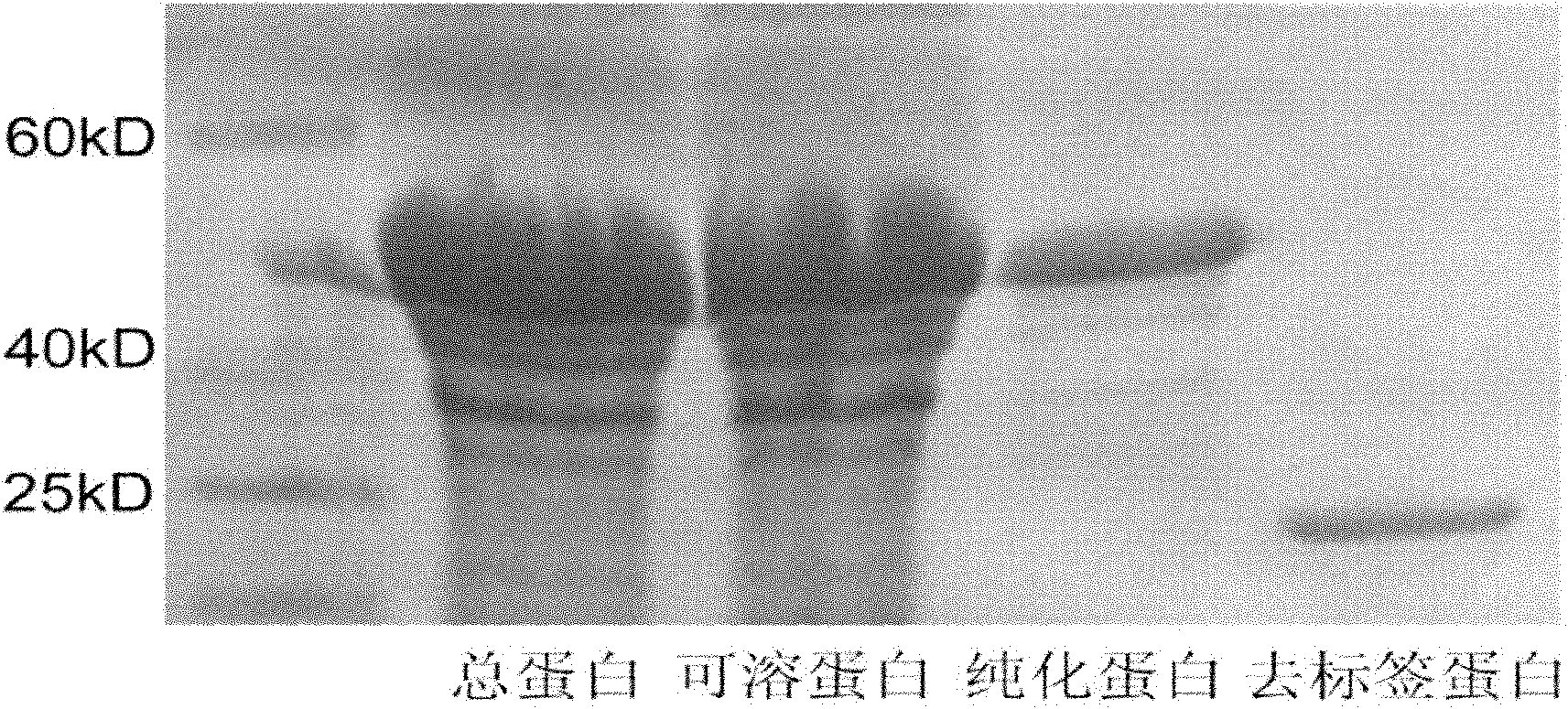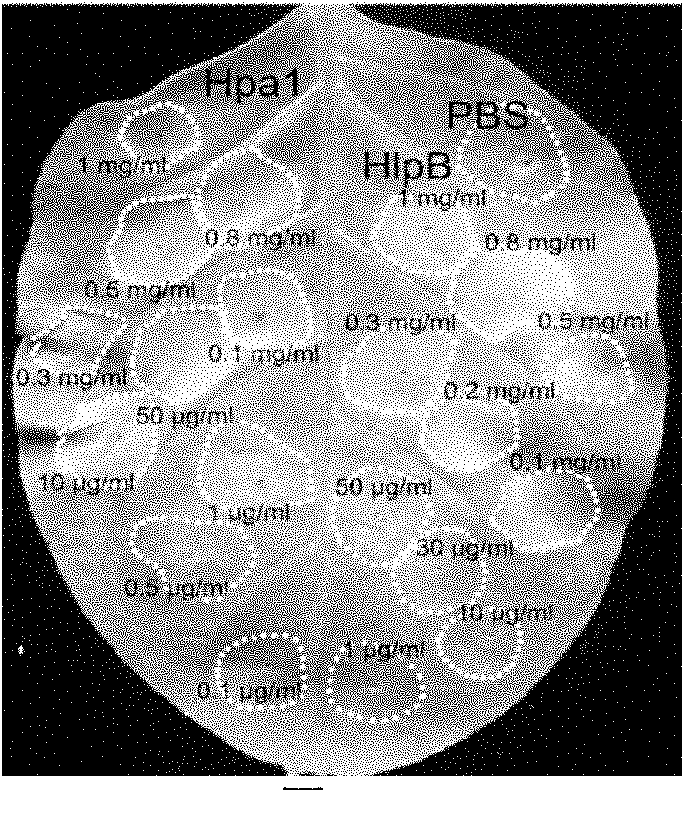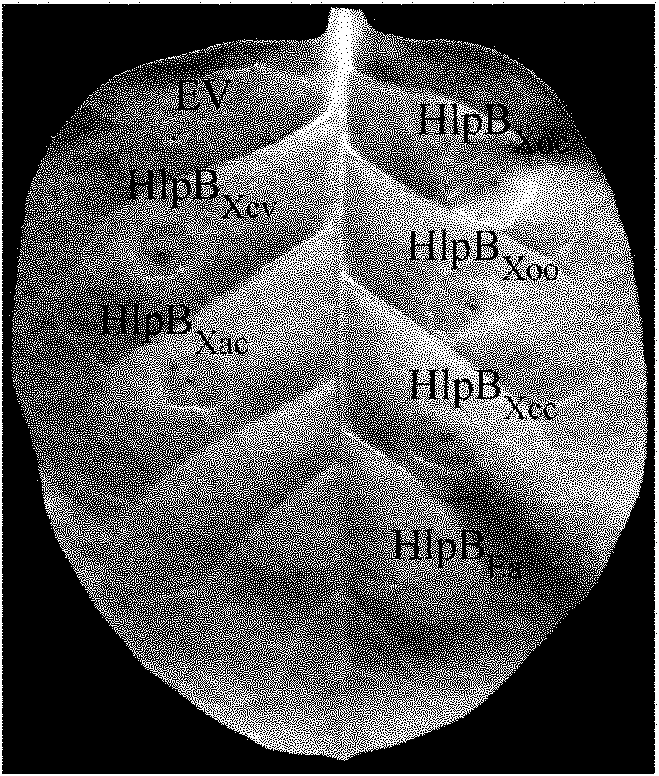Protein HlpB gene capable of stimulating plant to perform allergic reaction
An allergic reaction and protein technology, which is applied in the genetic field of biotechnology, can solve the problem of undiscovered disease-resistant immune response HlpB protein, etc.
- Summary
- Abstract
- Description
- Claims
- Application Information
AI Technical Summary
Problems solved by technology
Method used
Image
Examples
Embodiment
[0018] 1. Construction of prokaryotic expression vector of plant pathogenic Xanthomonas hlpB gene
[0019] The present embodiment is obtained from rice stripe disease RS105 bacterial strain, rice bacterial blight PXO99 A The hlpB gene in bacterial strain, Brassica oleracea 85-10 strain, Canker sorrel citrus 306 strain and Pepper spot 8004 bacterial strain genome DNA was used as a template, and primers hlpB-F (SEQ ID NO.3) and hlpB-R (SEQ ID NO.3) were designed. .4), perform PCR amplification, and the PCR amplification conditions are: 94°C / 4min+(94°C / 30sec+55°C / 30sec+72°C / 30sec)×35 cycles+72°C / 10min. The final PCR product was connected to the pMD18-T vector, and the connected product was transformed into a competent cell DH5α, and the recombinant transformant pThhlpB with Amp resistance was screened. Recombinant transformants were digested with EcoR I and Sal I to recover the hlpB fragment, which was ligated into the expression vector pET41a(+) treated with the same enzyme dig...
PUM
 Login to view more
Login to view more Abstract
Description
Claims
Application Information
 Login to view more
Login to view more - R&D Engineer
- R&D Manager
- IP Professional
- Industry Leading Data Capabilities
- Powerful AI technology
- Patent DNA Extraction
Browse by: Latest US Patents, China's latest patents, Technical Efficacy Thesaurus, Application Domain, Technology Topic.
© 2024 PatSnap. All rights reserved.Legal|Privacy policy|Modern Slavery Act Transparency Statement|Sitemap



